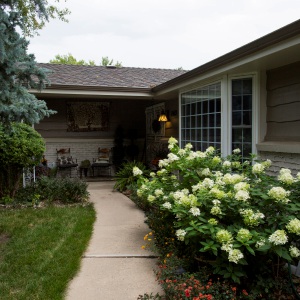Home buying gets tougher as prices in New Hampshire continue to rise, outpacing national increase

A "sale pending" sign is posted in front of a home for sale. (Justin Sullivan/Getty Images/TNS) Justin Sullivan
|
Published: 06-24-2025 3:48 PM
Modified: 06-25-2025 10:58 AM |
The median price of a single-family home in New Hampshire reached $540,000 in May, making it increasingly difficult for many residents to afford purchasing a house.
In Merrimack County, the median price came in at just under the state average at $537,000. Rockingham County posted the highest median at $710,000, while Coos County remained the most affordable at $302,500.
Bob Quinn, CEO of the New Hampshire Association of Realtors, noted that while the national median home price rose by 1% since May of 2024, New Hampshire saw a sharper increase of nearly 3%.
“It’s certainly a challenging housing market. It’s obviously still a seller’s market,” said Quinn. “That’s a significant obstacle to workers, families and young people in purchasing homes.”
Experts say that the increase in home prices is due in large part to a drop in the housing supply.
New Hampshire currently has about 2.1 months of housing inventory, meaning it would take just over two months to sell all available homes at the current sales pace.
A balanced market typically requires 5 to 7 months of supply, but the state hasn’t reached even the low end of that range since October 2016, said Dave Cummings, vice president of communications at NHAR.
At that time, there were over 7,300 single-family homes for sale in the state. By the end of May 2025, that number had dropped to 2,118, a 71% decrease.
Article continues after...
Yesterday's Most Read Articles
 Most New Hampshire homes aren’t ‘aging-ready,’ which is a problem in a rapidly aging state
Most New Hampshire homes aren’t ‘aging-ready,’ which is a problem in a rapidly aging state
 Celebrating National Ice Cream Day with Richardson’s Farm: ‘Nobody else does what we do’
Celebrating National Ice Cream Day with Richardson’s Farm: ‘Nobody else does what we do’
 Don Brueggemann, owner and manager of The Works Café, retires after 30 years downtown: ‘A great run’
Don Brueggemann, owner and manager of The Works Café, retires after 30 years downtown: ‘A great run’
 Riverbend to close adult mental health housing facility in Concord due to funding challenges
Riverbend to close adult mental health housing facility in Concord due to funding challenges
 Surplus seller Ollie’s enters New Hampshire, opens in Belmont
Surplus seller Ollie’s enters New Hampshire, opens in Belmont
 Free speech group, residents back Bow parents’ appeal in case involving transgender athletes
Free speech group, residents back Bow parents’ appeal in case involving transgender athletes
In Concord, only 27 homes were available for sale in May, with a median sale price of $477,450. In nearby Hopkinton, just 14 homes were on the market, and the median price was $655,000. Bow had 12 homes listed for sale – the median price for a single-family home there reached $699,000.
According to the Realtors Association, families earning $100,000 can currently afford just 19% of the homes on the market in New Hampshire. In a balanced housing market — a market where supply meets demand — that figure would be closer to 52%.
This year, lawmakers at the State House have advanced a series of bills aimed at tackling New Hampshire’s housing affordability crisis. These measures, now on their way to the governor’s desk for her signature, include expanding the state’s accessory dwelling unit law, allowing certain types of residential development in commercial zones, reforming outdated parking requirements, accelerating state permitting processes and clarifying key building codes.
Quinn said solving New Hampshire’s long-term housing shortage requires allowing homes to be built more densely, which would also help preserve open space.
“Continuing to limit development to single-family homes on three-acre lots, which is the equivalent of two football fields for every modest-sized home, will only make the housing crisis worse,” Quinn said. “Policymakers at both the State House and in local communities need to understand that we’re not going to solve New Hampshire’s long-term housing shortage without allowing for greater housing density.”
Editor’s note: This article has been updated to include additional context about the current housing market in New Hampshire.
Sruthi Gopalakrishnan can be reached at sgopalakrishnan@cmonitor.com







 New Hampshire committee seeks to prevent domestic fatalities like murder-suicide in Berlin
New Hampshire committee seeks to prevent domestic fatalities like murder-suicide in Berlin ‘A little piece of everything I like’: New Pittsfield barbershop brings more than a haircut to downtown
‘A little piece of everything I like’: New Pittsfield barbershop brings more than a haircut to downtown NH judge decides to pause Trump’s birthright citizenship order
NH judge decides to pause Trump’s birthright citizenship order Canterbury honors ‘real heroes’ with updated Military Veterans’ Project
Canterbury honors ‘real heroes’ with updated Military Veterans’ Project
